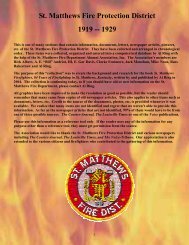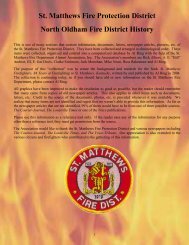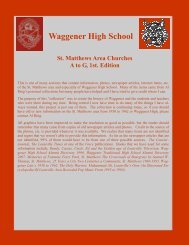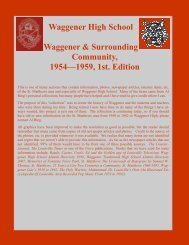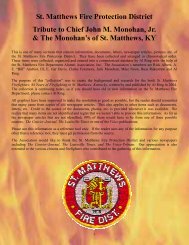Our Era - Movies, Music, Radio and TV, 6th Edition
Our Era - Movies, Music, Radio and TV, 6th Edition
Our Era - Movies, Music, Radio and TV, 6th Edition
Create successful ePaper yourself
Turn your PDF publications into a flip-book with our unique Google optimized e-Paper software.
<strong>Our</strong> <strong>Era</strong> - <strong>Movies</strong>, <strong>Music</strong>, <strong>Radio</strong> & <strong>TV</strong>, 1950‟s <strong>and</strong> 1960‟s. 1957Courtesy http://www.museum.tv/archives/etv/A/htmlA/americanb<strong>and</strong>/americanb<strong>and</strong>.htm & http://www.marshasvintage.com/page/page/1038910.htmAmerican B<strong>and</strong>st<strong>and</strong>American B<strong>and</strong>st<strong>and</strong> first aired on the ABC network on Monday, 5August 1957, becoming one of a h<strong>and</strong>ful of local origination programsto broadcast nationally. Initially, the program ran Monday throughFriday from 3:00 to 4:30 P.M., EST. Almost immediately, the showbecame a hit for the struggling network. In retrospect, AmericanB<strong>and</strong>st<strong>and</strong> fit in nicely with the programming strategy that evolved atABC during the 1950s. As the third television network, ABC couldnot afford the high-priced radio celebrity talent or live dramatic programmingthat generated the predominantly adult viewership of NBC<strong>and</strong> CBS. Therefore, ABC counterprogrammed its scheduled withshows that appealed to a younger audience. Along with programs suchas The Mickey Mouse Club, ABC used American B<strong>and</strong>st<strong>and</strong> to build aloyal audience base in the 1950s that would catapult the network tothe top of the prime-time ratings in the mid-1970s.From a cultural <strong>and</strong> social st<strong>and</strong>point, the impact of American B<strong>and</strong>st<strong>and</strong>should not be underrated. Even if the show diffused some of themore raucous elements of rock 'n' roll music, it helped to solidify thegrowing youth culture which centered around this phenomenon. Butthe show was important in another way as well. Once Clark took overthe helm of B<strong>and</strong>st<strong>and</strong> in 1956, he insisted on racially integrating the show, since much of the music was performed byblack recording artists. When the show moved to the network schedule, it maintained its racially mixed image, thusproviding American television broadcasting with its most visible ongoing image of ethnic diversity until the 1970s.In 1964, Clark moved the production of American B<strong>and</strong>st<strong>and</strong> to California, cutting broadcasts to once a week. In part, themove was made to facilitate Clark's expansion into other program production. Additionally, it became easier to tap intothe American recording industry, the center of which had shifted to Los Angeles by that time. The show's popularity withteenagers continued until the late 1960s.









